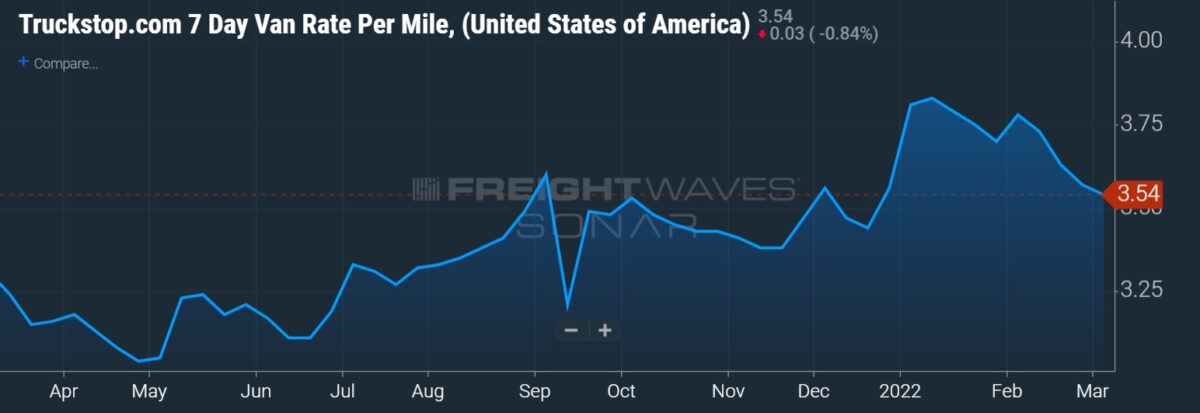Freight shipments were up in February following an omicron-related dip in January, according to Cass Information Systems. A Monday report showed the shipments index increased 3.6% sequentially on a seasonally adjusted basis and by the same percentage compared to the year-ago period.
The volumes dataset clawed back nearly half of January’s decline. An elevated number of cases were reported in early February, which meant absenteeism was still a headwind to freight flows to start the month.
“Omicron effects lingered into February, so we would expect further sequential improvement in March,” ACT Research’s Tim Denoyer stated in the report. “War-related effects on freight volume are likely to be small in the near-term, but higher energy prices will have an increasingly negative effect over time.”
The expenditures subindex was up 7% seasonally adjusted from January to the highest level on record. The dataset was 42.2% higher year-over-year and 66.2% higher compared to February 2020. Cost inflation and core rate increases (and higher shipments to a lesser degree) are keeping the index elevated.
The subindex is forecast to post a 25% year-over-year increase in 2022, assuming “normal seasonality from here.”
| February 2022 | y/y | 2-year | m/m | m/m (SA) |
| Shipments | 3.6% | 7.9% | 8.6% | 3.6% |
| Expenditures | 42.2% | 66.2% | 10.6% | 7% |
| TL Linehaul Index | 12.6% | 21.8% | NM | NM |
Inferred rates (expenditures divided by shipments) increased 1.6% seasonally adjusted in February, which was another record for the index. Freight rates within the index were 37% higher year-over-year.
“The m/m increase is mainly as Omicron-related effects on capacity continue to push rates higher, which will continue to impact new contract rates for a few more months,” Denoyer added. “However, in early March there are signs of lower spot rates despite the large increase in fuel prices.”
Spot rates have slid off of record highs logged earlier in the year. Spot rates include fuel prices, which are up nearly 40% year-over-year on average so far in 2022.

Denoyer notes a recent one-week jump in fuel prices (75 cents to $4.85 per gallon) pushed TL freight costs 4% higher. “But spot rates have not risen to account for the higher fuel price, implying deflation net of fuel.”
“Though Class 8 tractor capacity remains tight and is at increased risk if the Russia/Ukraine war worsens the chip shortage, we are seeing tangible signs of improvement in driver availability, which could begin to slow the trend in freight rates,” Denoyer said.
Also, inferred freight rates are being inflated by slow rail service, which has pushed more shipments onto the road. The increase in miles along with the higher costs associated with trucking has pushed total freight costs up.
Inferred rates were up 23% year-over-year in 2021 and are expected to increase by the same percentage in 2022.
The Cass Truckload Linehaul Index, which excludes fuel and accessorials, was up 12.6% compared to February 2021. The index has been tweaked to use a broader information set. The changes led to an upward revision of 12.8% higher year-over-year in January, compared to the initial report of 7.2%.
The longer length of haul associated with modal shift to truck from rail is weighing down the linehaul index, which is calculated on a per-mile basis, by roughly 300 basis points. The math assumes a 2.1% decline in rate per mile for each 100-mile increase in length of haul.
“Strong freight demand and significant capacity limitations are continuing to press truckload rates higher. As intermodal network congestion gradually eases over the course of 2022, a reversal to shorter length of haul will likely add upward pressure to this index above and beyond market rate increases,” Denoyer said.
Click for more FreightWaves articles by Todd Maiden.
- Lineage Logistics adds port locations in latest deal
- Yellow paying $6.8M to settle DOD overcharging claim
- Yellow’s February tonnage drop sours streak of positive LTL updates











